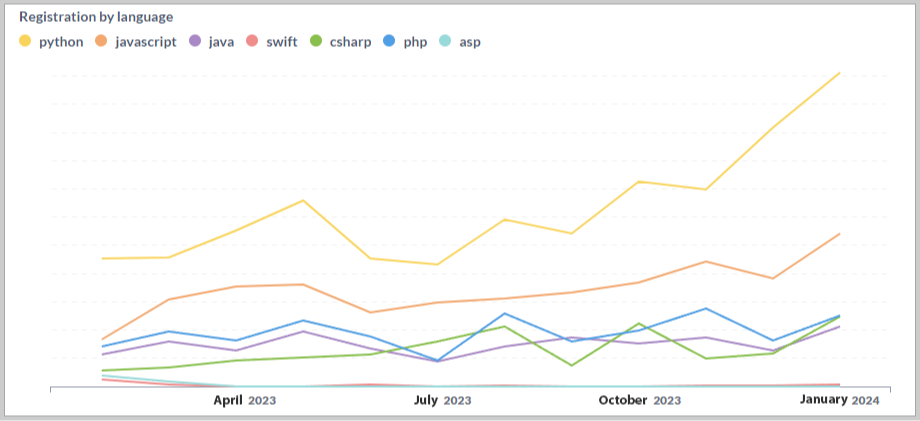
Luxand.cloud Insights. Popular Programming Languages For Face Recognition
Facial recognition is a technology that allows users to automatically identify (recognize who is in the photo) or verify (confirm that the person in the photo is that person) a person in a photo or video person. Neural networks are used for recognition, which can read and analyze the unique features of a human face, and then compare them to a database. Face recognition is typically used for security purposes in the government sector. However, the use cases of face recognition usage are much broader nowadays. It is used for KYC identity verification, attendance systems, biometric authentication, age verification, access control, fraud detection, and more.
Therefore, face recognition technology is currently popular and many developers wonder which language to choose. In this article, we will describe which languages are typically used for this purpose and tell you about Luxand.cloud insights, and which languages our clients most often use.
What Programming Languages are Usually Used
A variety of programming languages can be used to develop facial recognition software, but some of the most common include:
Python. Python is a versatile and widely used programming language that is well-suited for developing machine learning applications. Python is also a good choice for beginners since it’s easy to learn.
C/C++. C and C++ are powerful programming languages that are often used for developing high-performance applications. They are also well-suited for developing low-level code, which is often necessary for facial recognition algorithms.
Java. Java has long been a staple for cross-platform development. Its extensive library of machine learning and computer vision tools makes it a formidable choice for facial recognition software development.
Luxand cloud Insights. Popular Programming Languages
Luxand.cloud is a provider of facial recognition and facial search APIs and ready-made solutions for a variety of use cases. We at Luxand.cloud conducted our study to determine which programming languages are the most widely used for facial recognition. Below you can see the results. Among the most popular are Python, JavaScript, PHP, and Java.

Here are the results:
Python. Python emerged as the most popular programming language for facial recognition, likely due to its versatility, and ease of use. Its popularity among developers makes it a strong choice for prototyping and developing facial recognition applications.
JavaScript. JavaScript's dominance in web development extends to facial recognition applications. Its ability to seamlessly integrate with web frameworks and browsers makes it a popular choice for developing facial recognition features within web applications.
PHP. PHP is not as widely used as Python or JavaScript but it’s particularly well-suited for developing large-scale facial recognition applications with high traffic demands.
Java. Java's cross-platform capabilities make it a compelling choice for developing facial recognition applications that need to run on multiple operating systems and devices.
Speaking about Luxand.cloud facial recognition API, it doesn't matter which programming language you choose, for most of them we've code examples that you can simply copy and paste into your project.
Conclusion
The choice of programming language for facial recognition software will depend on the specific requirements of the project. If the software needs to be small and efficient, then C or C++ may be a good choice. If the software needs to be cross-platform, then Java may be a good choice. If the software needs to be easy to use, then Python may be a good choice.